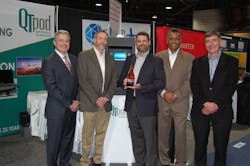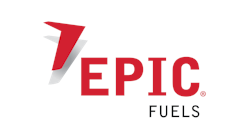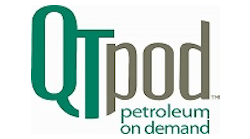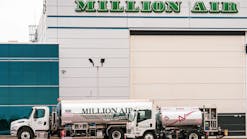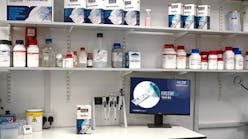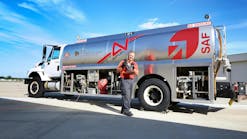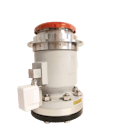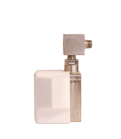While improved technology was making credit card transactions faster around the globe, officials at QTpod saw an opportunity to bring similar improvements to the aviation fueling world.
Although self-serve fueling terminals existed, the technology was quickly becoming outdated. So QTpod launched its M4000 terminal, offering its customers multiple ways to increase connectivity. And with plans to dispense ground fuels on the horizon, QTpod’s M4000 may have a large impact on ground support operations for years to come.
For these reasons and more, QTpod has been named the Ground Support Worldwide 2018 Product Leader of the Year.
Invention Spurred by Necessity
The genesis of QTpod’s self-serving fuel terminal was prompted 30 years ago by the company’s original owner William Goelz. A pilot in Alaska, he found himself stranded at a remote airport without access to fuel.
“He had flown into a small airport, and there was no one manning this airport … so he ended up having to spend the night in his airplane,” explains Matt Duncan, general manager at QTpod. “With necessity being the mother of invention, he went back to his garage, started wire wrapping, toying with things and essentially came out with the first aviation self-serve terminal.”
That first model, the M1200, was large and took a long time to build. The company, which was originally called Applied Technology, launched a second-generation model, the M1000, soon after. That terminal was a less feature-rich model, but was more economical for customers.
“In 2002, we came out with the M3000, which basically married all of the features of the first two units. Somebody could still get a full-featured unit, and get it at an economical cost,” Duncan says.
The M3000 had success with approximately 1,600 airports, marinas and fleet operators utilizing the terminal.
With the analog phone network rapidly becoming obsolete and digital lines replacing it, leadership at QTpod recognized there was a lack of communications reliability with self-serve fueling terminals, especially around transaction approvals. So they sought to improve it.
“What we found is there was a big gap there,” Duncan recalls. “People were using something that was essentially operating on very old technology – dial-up technology, embedded software systems. We wanted to design a system that not only operated on today’s infrastructure – so we could bring self-serve fueling into the 21st century, but also design something that was going to be modular that would be able to evolve with technology.
“We saw a need out there for a system that was able to operate reliably and that could be operated anywhere with a cloud-based system,” he says, adding a cloud-based system offers advantages over fuel-management software dedicated to an onsite computer.
Customer Connection
As Step 1 for an updated fueling terminal, QTpod officials scrapped the previously used dial-up technology, which depended on a dedicated copper line that was becoming increasingly more expensive and unreliable.
The M4000, which can operate up to eight pumps, is equipped with modern communication capabilities, utilizing Wi-Fi, cellular or Ethernet connections.
“Every site is going to have different conditions that either lend itself or prohibit certain communication methods,” Duncan says.
“So for instance, if we need to hook up to an existing fuel farm, it may be three-quarters of a mile away from the terminal building where they have internet access. So that’s why we have the cellular option,” he continues. “They may be close, but they may have to trench up the tarmac to get an Ethernet cable out there. That’s why we have Wi-Fi. We also have a long-range antenna system that can shoot an Ethernet signal over a mile line-of-sight.
“We didn’t want to leave any potential situation uncovered.”
Kevin Cox, president of EPIC Fuels – QTpod’s parent company, says the improved functionality of the machine has vaulted self-serve fueling terminals out of the Dark Ages.
“How many ATMs today are on a dial-up modem? Virtually none,” Cox points out. “This industry has taken a long time to figure out there is a much more economical way to do it.
“Now, for the users, it’s instantaneous.”
Anthony Oshinuga confirms the increased transaction speed and conveniences. The EPIC Fuels-sponsored aerobatic pilot says previous fueling terminals required patience.
“When we pulled up to the pumps, the joke that me and my friends would have is ‘OK, guys. Take out your lunch because it’s going to take forever for the transaction to go through,’” Oshinuga says. “When we were introduced to the M4000, we put the card in there and it was instantaneous and ready to go.
“It asks preliminary questions, like your tail number and how many gallons you want,” Oshinuga explains. “But once you hit enter, the fuel was immediate and ready to go. It blew us away.”
Accessibility and Security
“It’s not just the reliability of the system. It’s really what it brings to customers – mainly in the cloud-based software, being able to view the entire network,” Cox says, referring to QTpod’s Siteminder Fuel Management software.
Siteminder automatically performs what would otherwise be time-consuming accounting tasks such as collecting data and producing analytical reports. The software can also improve the efficiency and profitability of fuel operations by capturing sales data from the M4000.
What’s more, the cloud-based software provides owners with onsite or remote access to transaction, inventory and customer information in order to make sound business decisions. Having real-time data available provides more efficient operations. The cloud-based software solves a common problem, which is that staff who are geographically separated now have the ability to view fueling data in one location.
“Literally, via an app, you can see what’s going on at any particular station,” Cox explains.
The software can also assist with accessibility.
“The system itself is somewhat of a gatekeeper to the fuel. You have to have some sort of access device, whether that be a proprietary card or a credit card, to get to the fuel. But beyond that, we have a couple of other layers,” Duncan says.
Access schedules can be applied, so that fuel can only be dispensed during set times; cards can be set up to block certain fuels in order to prevent misfuelings; or access can be restricted to registered cards only, among other features.
“That’s not something that was available on the old dial-up systems. With access to the internet, it’s really limitless what we can do with it,” Duncan adds.
Credit card security was also a key focus when developing the M4000.
“Our card reader manufacturer has a new card reader that actually encrypts card data from the moment that you swipe it. This has a couple of benefits for the card holder,” Duncan explains. “There’s a one-time token applied to that credit card transactions, so that if someone were to break into that card reader, there would be no usable data stored within there.”
The information goes into the cloud, gets decrypted offsite by the card reader manufacturer and sent on to the processer, Duncan says, noting this process significantly reduces an FBO’s PCI footprint because there is never unencrypted data within their environment.
“It’s a security for the card user. It’s a security for the FBO,” Cox adds.
Hardware Revamp
The upgrades to the terminal’s communication methods is the hallmark of the M4000. However, additional improvements to other components, such as the display, printer, keypads and cabinet have also been made.
“We went to more military-spec range components because we know it is going to be in some harsh environments,” Duncan explains. “We learned some lessons from the previous three systems that we had out there. We pinpointed the weak-points and correct those in the new system.”
The monitor on previous models faced up, which created glare issues on sunny days. Over time, it would suffer damage from direct sunlight. Conversely, the new monitor is shaded, offers a bigger screen and has a light sensor to dim down at night.
“The manufacturers of these displays actually make some of the panels on the F-15 fighters,” Duncan notes. “It has an anti-glare, anti-reflective lens on it.”
The stainless steel cabinet provides additional durability while resisting corrosion, and the weather-proof doors keep the internal components dry.
“There’s a lot of electronics inside, so we have to make sure that’s a sealed cabinet,” Duncan says. “We basically have two levels of sealing on that. We have a channel around the door that allows any water that does get in to just roll off. Then you have your normal gasket where compression locks push that door in.”
More to Come
Designed to fit over the existing footprint of the standard M3000, the M4000 offers a modular design, so that the unit can adapt and evolve with further technological advancements. When software is updated, it can be pushed out to all locations. Most systems require a technician onsite to physically install hardware to perform important updates; the M4000 eliminates this burden on the operator.
The terminal utilizes USB interfaces for most components, so someone onsite can easily replace a part. Likewise, a Windows operating system with common drivers eases any necessary replacements.
“We’ll be able to keep it state-of-the-art with both the hardware and the software without having to redevelop the ‘M5000,’” Cox says.
A key upgrade coming soon will be the ability to dispense ground fuels.
“We are evolving our software and reporting so that will be the next market we enter into,” Cox notes. “That market is humongous and in great need of this device. We’re really excited about it.”
“Part of that was a lot of our current distributor network that we work with on the aviation side also work in the ground fuel section,” Duncan adds. “They really looked to us because they’ve been dissatisfied with what’s out there – whether it be the hardware itself, the support, etc.”
The demand for a system like the M4000 has been growing in multiple markets, and therefore QTpod’s unit has received a positive response since its release.
“It solves bunch of ills for a lot of people. Everybody is more secure. Everybody can transact quicker,” Cox says. “You know what the data is. You can make good business decisions off of it. It’s just long overdue.”
